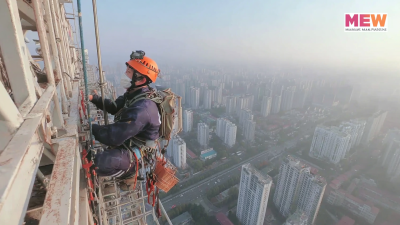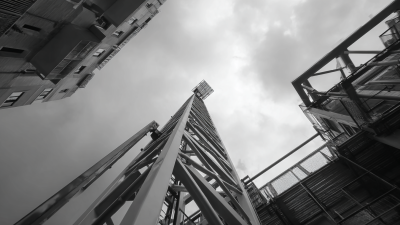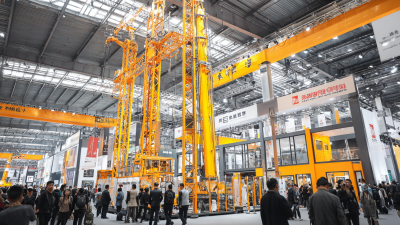Understanding Ansi A92 Mewp Standards for Safer Worksite Practices
The Ansi A92 MEWP Standards play a crucial role in promoting safety and efficiency on worksites that utilize mobile elevating work platforms (MEWPs). These standards establish essential guidelines and requirements aimed at minimizing risks associated with operating these equipment, thereby ensuring the well-being of workers and enhancing overall productivity. Understanding the Ansi A92 MEWP Standards is not only vital for employers and safety professionals, but also for operators and maintenance personnel who interact with these machines on a daily basis. As construction sites become increasingly complex, adherence to these safety standards becomes imperative, offering a framework for responsible operation, training, and inspection. This introduction to the Ansi A92 MEWP Standards seeks to illuminate their significance in fostering safer worksite practices and highlights the necessity of compliance to protect workers and optimize operations in diverse industries.

Understanding the Importance of Ansi A92 Mewp Standards for Worksite Safety
The ANSI A92 MEWP (Mobile Elevating Work Platform) standards play a crucial role in enhancing worksite safety by establishing comprehensive guidelines for the operation, maintenance, and training related to these machines. By adhering to these standards, employers can significantly reduce the risk of accidents and injuries that are often associated with working at heights. The guidelines cover essential aspects such as stability, load capacity, and operator training, ensuring that all personnel involved with MEWPs are equipped with the necessary knowledge and skills to perform their tasks safely.

Moreover, the implementation of ANSI A92 standards fosters a culture of safety within organizations. When workers understand the importance of following these regulations, they are more likely to act responsibly and prioritize safety in their daily operations. Regular inspections, proper usage, and adherence to safety protocols not only protect the workers but also contribute to the overall efficiency and productivity of the project. By investing in MEWP standards, companies demonstrate their commitment to creating a safer work environment, ultimately leading to enhanced employee morale and reduced liability costs associated with workplace accidents.
Key Features of Ansi A92 Mewp Standards You Need to Know
The new ANSI A92 standards for mobile elevating work platforms (MEWPs) have introduced crucial guidelines that enhance safety for workers at height. Effective from June 1, these standards focus on several key aspects including design, safe use, and training requirements, which are encapsulated in ANSI 92.20, ANSI 92.22, and ANSI 92.24 respectively. These regulations were developed in response to the alarming statistic that approximately 26 construction workers die each year while using aerial lifts, accounting for 2-3 percent of all construction fatalities. By establishing comprehensive protocols, the standards aim to significantly reduce accidents and ensure safer working conditions.
Technological advancements play a pivotal role in augmenting the safety features outlined in the A92 standards. As the industry trends towards high-tech solutions, the incorporation of improved safety mechanisms has never been more critical. For instance, recent updates to design criteria are expected to improve operational stability and enhance user training procedures, thereby fostering a safer work environment. The implementation of these standards reflects a growing concern for worker safety, paving the way for enhanced compliance practices across the equipment rental sector and beyond, while aligning with international standards for aerial lift operations.
Understanding ANSI A92 MEWP Standards - Key Features
This chart illustrates the importance rating of key features related to ANSI A92 MEWP standards. Each feature is rated on a scale from 1 to 5, indicating its significance in ensuring safer worksite practices.
Implementing Ansi A92 Mewp Standards: Best Practices for Your Team
Implementing ANSI A92 MEWP standards is essential for ensuring the safety of workers at heights. These standards aim to establish a baseline for manufacturers, operators, and employers regarding the design and use of Mobile Elevating Work Platforms (MEWPs). A key aspect of successful implementation lies in educating teams about best practices. According to a recent industry report, adherence to these standards can reduce the risk of accidents by up to 30%. This data emphasizes the importance of training and continuous awareness among workers.
To effectively implement ANSI A92 standards, companies should prioritize thorough training sessions that cover both operational protocols and hazard recognition. Encourage a culture of safety where team members feel empowered to speak up about unsafe practices.
Tips:
2. Develop a checklist for daily inspections of MEWPs that aligns with ANSI A92 requirements.
3. Utilize available resources to stay informed about new safety initiatives and recommended practices.
By fostering an environment focused on safety and adherence to standardized practices, teams can significantly minimize risks associated with working at heights.

Training Employees on Ansi A92 Mewp Standards for Enhanced Safety
Training employees on ANSI A92 MEWP (Mobile Elevating Work Platforms) standards is essential for enhancing safety in the workplace. According to a report by the Occupational Safety and Health Administration (OSHA), approximately 50% of all fatalities in the construction industry involve falls, many of which could be prevented through proper training and adherence to safety standards. By providing comprehensive training on ANSI A92 standards, organizations can significantly reduce the risk of accidents related to MEWP usage, ensuring that employees understand the configurations, load capacities, and operational requirements of the equipment they work with.
Moreover, the National Institute for Occupational Safety and Health (NIOSH) highlights that approximately 20% of workers using aerial lifts are involved in incidents that result in serious injury or death. Training programs focusing on ANSI A92 standards not only cover the technical aspects of equipment operation but also stress the importance of safety protocols such as conducting pre-operational inspections and using fall protection systems. By investing in robust training initiatives, businesses can foster a culture of safety and compliance, thereby protecting their employees and reducing liability costs associated with workplace injuries.
Common Pitfalls in Adopting Ansi A92 Mewp Standards and How to Avoid Them
Adopting the ANSI A92 MEWP standards can significantly enhance safety on worksites, yet numerous pitfalls may hinder effective implementation. One common issue is a lack of comprehensive training for operators and personnel. Without proper education on these standards, workers may unknowingly engage in unsafe practices, potentially leading to accidents or injuries. It's essential that organizations invest in thorough training programs that not only cover the standards in detail but also emphasize practical applications and real-world scenarios.
Another prevalent challenge is the insufficient integration of these standards into existing safety protocols. Many companies might be aware of the ANSI A92 requirements but fail to weave them into their daily operations. This oversight can lead to confusion and inconsistent practices. To prevent this, organizations should establish clear guidelines that incorporate the standards into their safety management systems, ensuring that every employee understands and follows the updated procedures. Regular audits and feedback mechanisms can also help maintain adherence to the standards, fostering a culture of safety that prioritizes compliance and accountability.
Understanding Ansi A92 Mewp Standards for Safer Worksite Practices
| Common Pitfalls | Description | Suggested Solutions |
|---|---|---|
| Inadequate Training | Workers are not properly trained on MEWP operation, leading to safety hazards. | Implement a comprehensive training program that adheres to ANSI A92 standards. |
| Ignoring Inspections | Failure to conduct regular inspections on MEWPs can result in overlooked maintenance issues. | Schedule frequent inspections and maintain proper logs to track MEWP conditions. |
| Underestimating Load Capacity | Not understanding the load limits of the MEWP can lead to tipping and accidents. | Educate operators on load capacities and ensure they adhere to guidelines. |
| Lack of Site Risk Assessments | Not conducting site-specific risk assessments can result in unsafe operating conditions. | Perform thorough risk assessments before using MEWPs and adjust procedures accordingly. |
| Neglecting Weather Conditions | Operating MEWPs under adverse weather conditions can lead to accidents. | Establish clear guidelines to monitor weather conditions before operations. |
Related Posts
-

China's Dominance in Manufacturing: The Rise of Best Mast Climbing Work Platforms (MEWPs)
-

Why Understanding Ansi A92 Mewp Standards is Essential for Safety Compliance
-

How to Maximize Efficiency in Construction Using the Top Climber Mast Climbing System
-

Exploring Industry Trends: Mast Climbing Gear Innovations at China's 138th Canton Fair 2025
-

How to Effectively Install Top Climber Mast Climbing System for Your Construction Projects
-

5 Essential Tips for Ensuring Safety on Mast Climbing Work Platforms
